By 2025, it’s hard to tell what’s real online. With AI making more and more content, it’s tough to know if a person or a machine wrote something.
People are getting suspicious of anything that looks too perfect.
This makes it hard for businesses. If they only use fancy AI-made ads, people might not believe them. Customers want real human connection, and they can spot a fake pretty easily.
But there’s a good answer: User-Generated Content. This means stuff made by regular people, like customers.
In this article, we’ll show you 20 notable examples of how brands use authentic customer voices to build trust and get noticed.
These examples show real people’s importance, especially when there’s so much AI-made stuff online.
Visitors leave your website without taking action?
They don’t trust your site or feel urgency to act. WiserNotify builds both, turning doubt into action & visitors into customers.
How User-Generated Content Boosts Conversions for Online Stores
When your customers are your best marketers and share photos, reviews, or experiences with your products, they build trust that no advertisement can match.
This content from users can turn curious visitors into loyal buyers, increasing your sales and helping your business grow.
That’s the magic of customer photos on your product pages: They cost-effectively boost sales and enhance customer retention.
Quick Tips to Consider
Product Pages: Add customer photo and reviews to make your product pages more relatable and convincing.
Social Media: Share visual content to increase brand visibility and customer engagement.
Email Campaigns: Include real customer testimonials in your emails to build credibility and drive conversions.
Review Sections: Encourage customers to leave reviews and share their photos to enhance authenticity and attract new buyers.
Types of UGC Content
User-generated helps build trust and engage your audience. It involves leveraging content by your customers or followers and turning them into brand advocates.
By adding UGC to your marketing content, you can create authentic, relatable content that resonates with your target audience.
Here’s a look at different types of UGC and how to use them effectively in your campaigns.
1. Reviews and Testimonials
Reviews and testimonials act like a friend’s recommendation. They help build trust and influence choices.
Share real customer experiences in your social media marketing. Post pictures and quotes from satisfied clients on your website and social media campaigns to show authentic feedback.
It is a strong way to connect with your audience and increase credibility.
2. Video Content
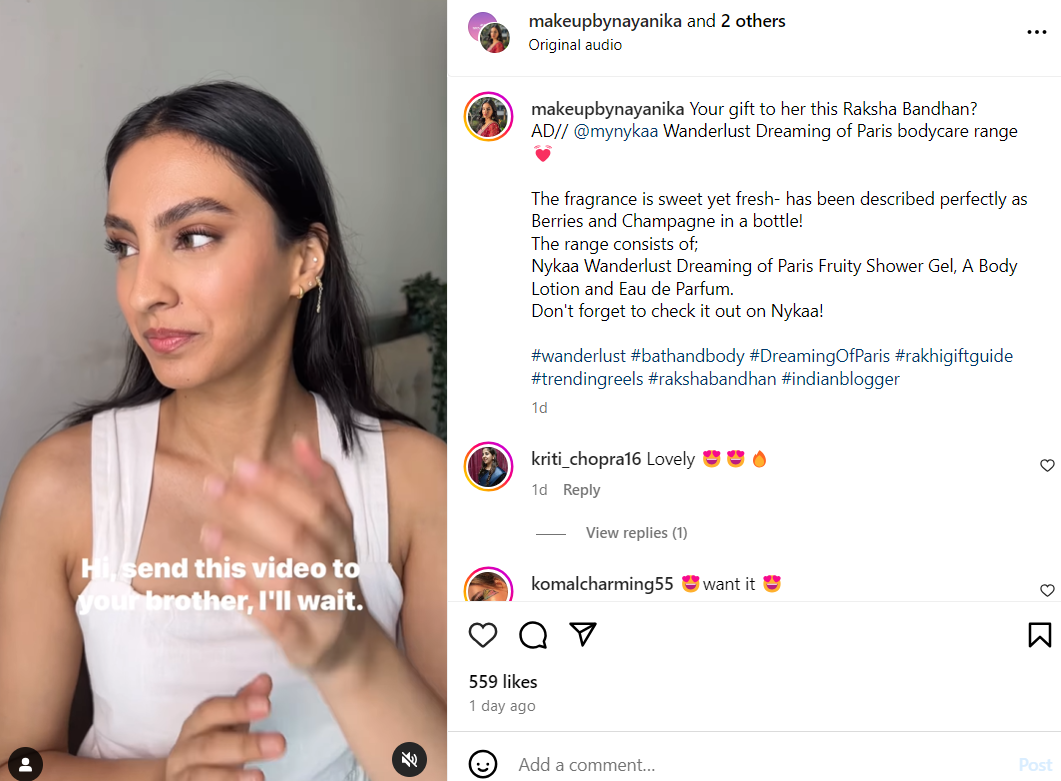
Videos grab attention and keep your audience interested. Use videos in your UGC campaigns to show your product in action. Share the videos on social media and your website to boost your content marketing.
This type of UGC marketing adds authenticity and helps customers see themselves using your product.
3. Blog Posts and Case Study
Blog posts featuring customer stories add depth to your content and make it more engaging. Use these posts in your content marketing strategy and share them on social media to attract visitors and showcase your brand’s value.
Case studies turn real experiences into compelling narratives that build trust and highlight how your product benefits users. For a personal touch, share these success stories through blogs, social channels, and your website.
4. Hashtag Campaigns
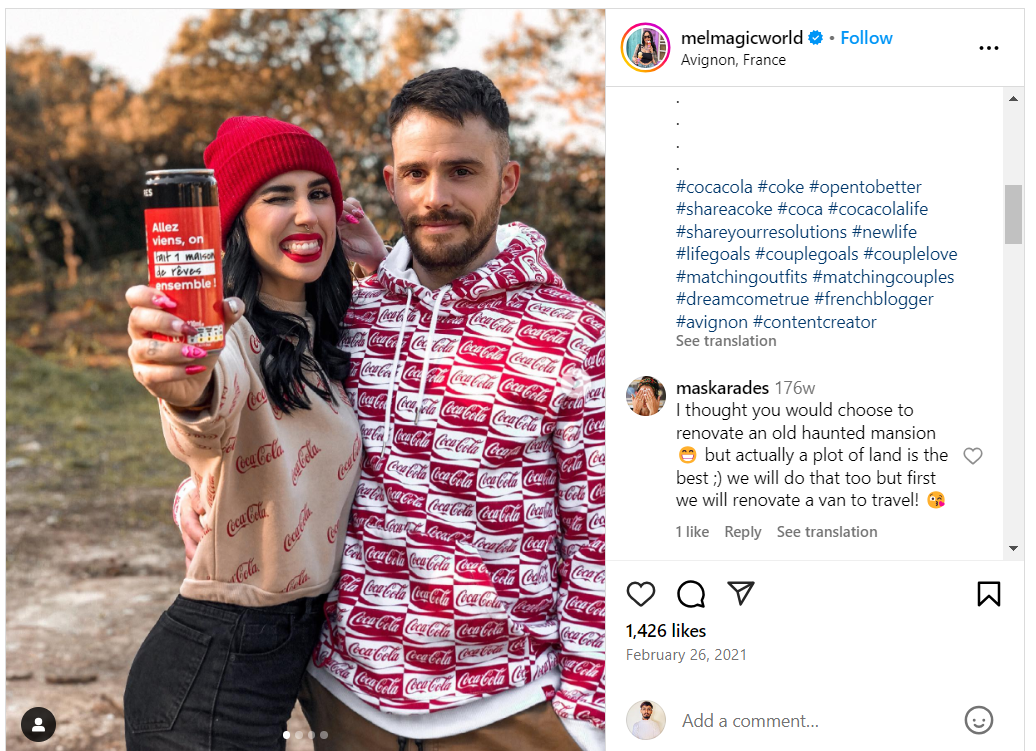
Hashtag campaigns encourage your audience to share their content with your specific tag, increasing visibility and building community engagement.
Use these hashtags in your marketing campaigns to gather user-generated content (UGC), like images and stories. It’s a great way to create excitement and get people involved in your brand’s story.
For example, the Coca-Cola #shareACoke campaign encouraged users to share photos with personalized Coke bottles, leading to a massive collection of UGC images.
5. Paid UGC
Paid UGC means paying users to create content about your brand. This method can provide high-quality, genuine content for your marketing.
Share this paid UGC on your social media, website, and ads. It helps you reach more people and aligns with your brand’s message.
Learn More: 9 Powerful UGC Platforms to Grow Your Business in 2025
20 Successful Brands Use User-Generated Content Examples
Many brands use user-generated content (UGC) to connect with their audience, build trust, and spread their message.
By encouraging customers to share their experiences and creativity, these brands turn everyday users into brand ambassadors.
Here’s how 20 successful brands have leveraged User-Generated Content to build stronger connections with their customers.
1. Louis Vuitton
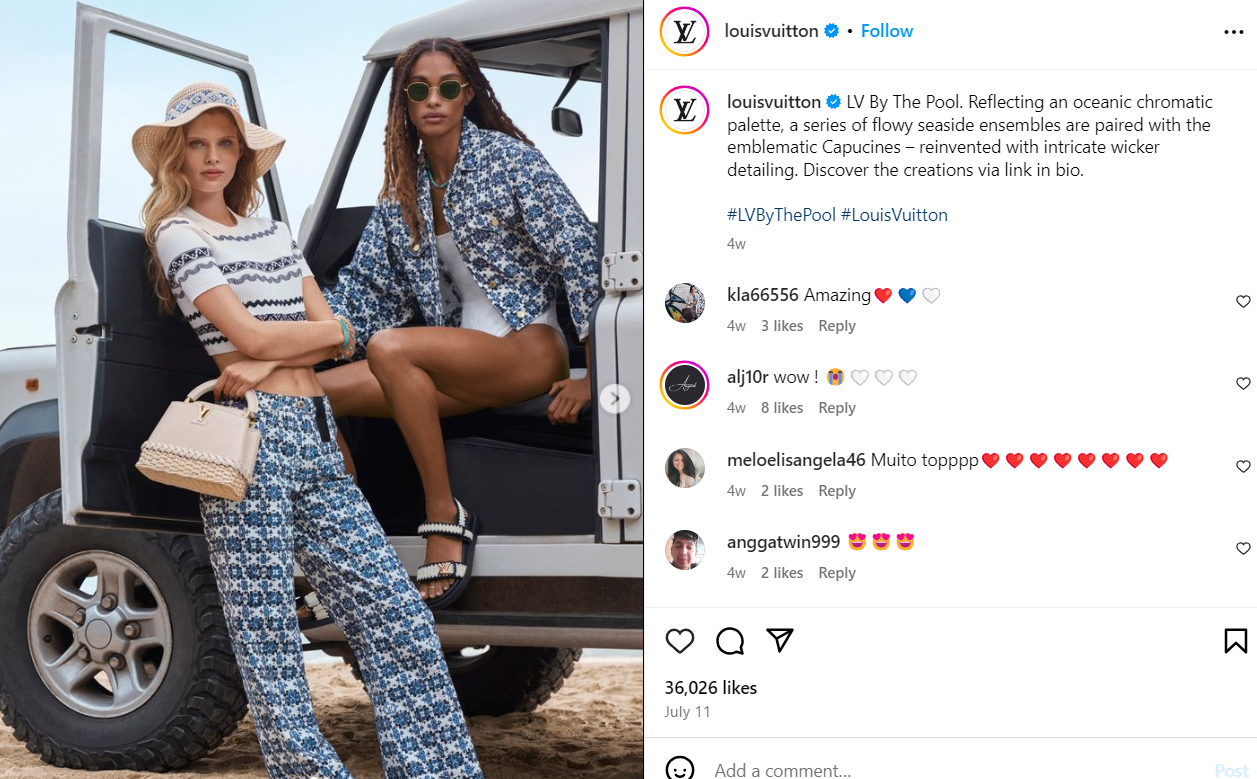
Louis Vuitton is a luxury fashion brand known for its high-end bags, clothing, and accessories.
How they use: Louis Vuitton encourages customers to share photos of their products on social media. This word-of-mouth marketing allows the brand to showcase its elegance through the eyes of its customers, mixing traditional advertising with personal experiences.
2. Jot Form
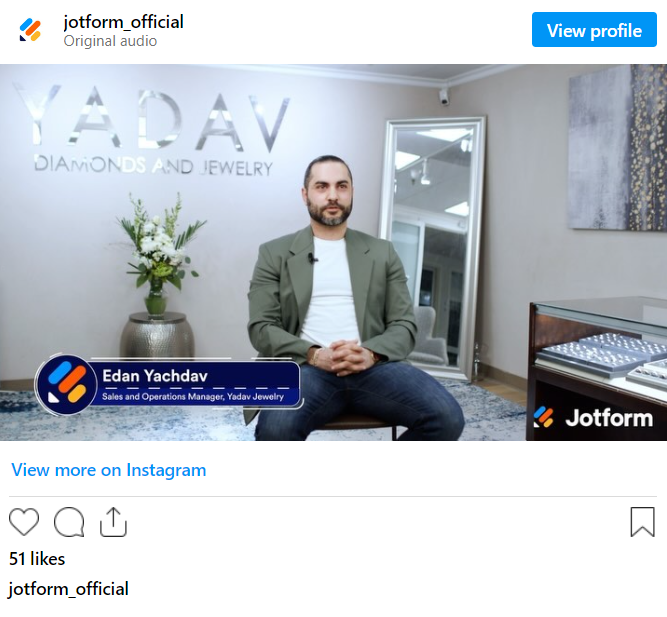
Jotform is a leading online form builder that allows users to create customized forms for various purposes, including surveys, registrations, and feedback collections.
How they use it: Jotform leverages user-generated content in its ads to showcase how its people use its form-building platform. It highlights customer stories and examples, often sharing user testimonials and success stories.
3. Crocs #MyCrocsEra

Crocs is a footwear brand famous for its comfortable and colorful clogs.
About the campaign: The #MyCrocsEra campaign invited fans to share their personal Crocs style on social media. The campaign highlighted the fun and unique ways people wear Crocs, turning everyday customers into advocates and boosting the brand’s visibility across social media accounts.
Check Out: How to Use UGC Ads to Grow Your Brand
4. Slack
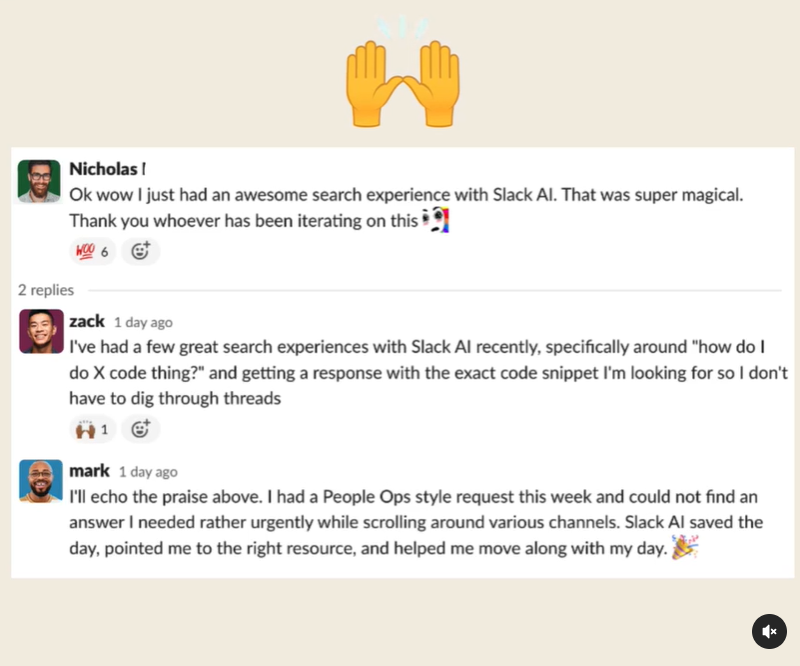
Slack is a communication platform designed for teams to collaborate efficiently.
How they use: Slack shares user-generated content focused on real-life stories from teams who use the platform to improve productivity. By showcasing user experiences, Slack demonstrates its value beyond traditional advertising, authentically connecting with potential customers.
5. Clear Trip #TravelWothClearTrip
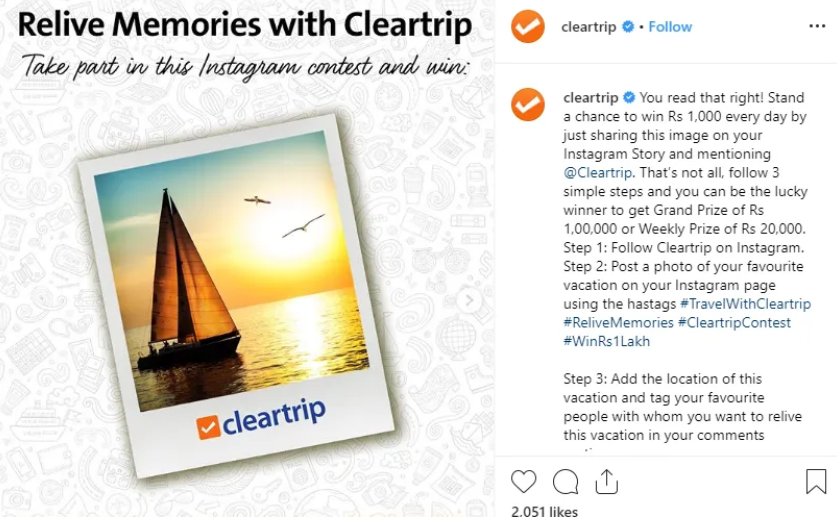
Cleartrip is an online travel company that simplifies booking flights, hotels, and activities.
About the campaign: Cleartrip launched a branded hashtag campaign #TravelWothClearTrip where customers share their vacation photos to win a prize. The campaign adds authenticity to their promotional materials and helps build trust among customers.
6. Vitamix
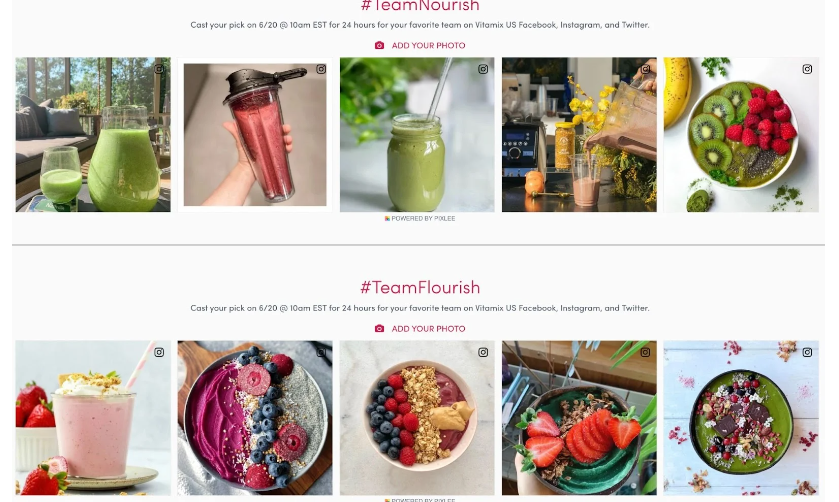
Vitamix is a brand known for its high-performance blenders.
About the campaign: The “Smoothie of the Year” contest invited users to share their best smoothie recipes made with Vitamix blenders. The campaign not only showcases the versatility of Vitamix products but also engage customers in a fun and creative way.
7. Doritos #BurnSelfie
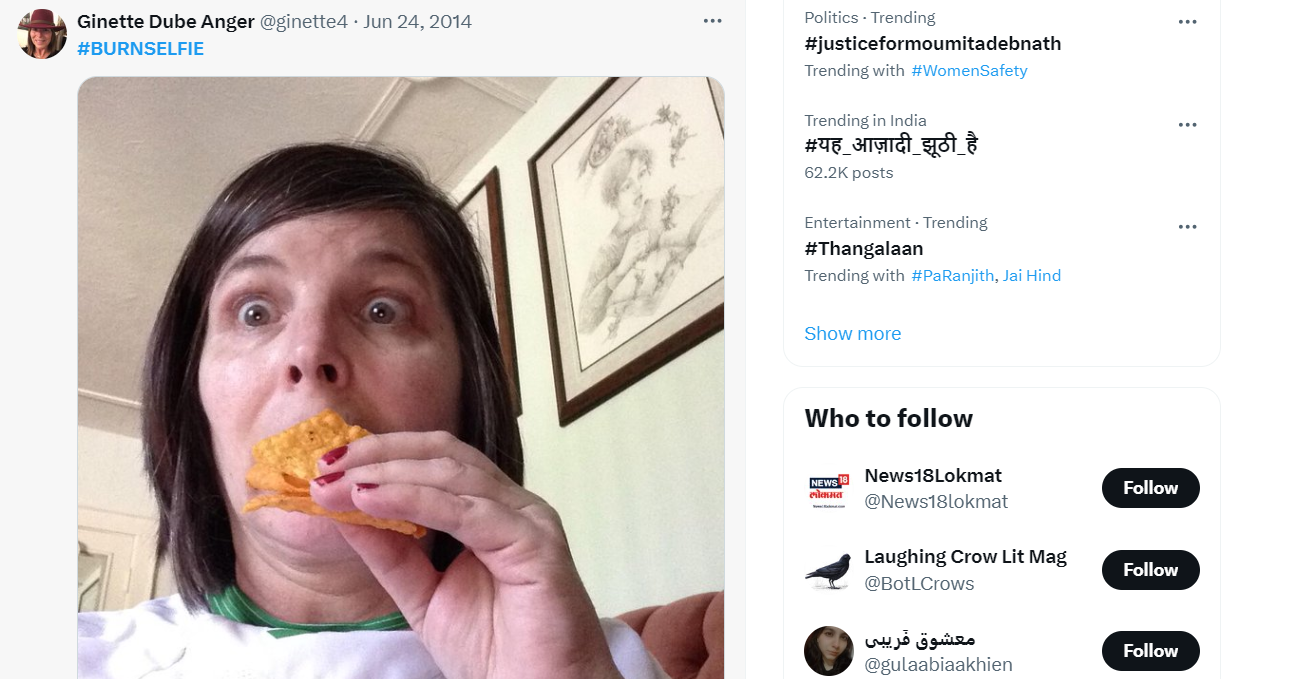
Doritos is a popular snack brand known for its bold flavors.
About the campaign: The #BurnSelfie campaign asked fans to share selfies after trying Dorito’s spiciest chips. The fun and interactive campaign created a buzz on social media, with users sharing their reactions and encouraging others to join in the spicy challenge.
8. Calvin Kelin #MyCalvins

Calvin Klein is a global fashion brand known for its minimalist designs and iconic underwear.
About the campaign: The #MyCalvins campaign asked customers to share photos wearing Calvin Klein products. The UGC campaigns created a global movement, with royal customers and celebrities alike posting photos, helping the brand reach a diverse and massive audience.
9. Lululemon

Lululemon is a brand known for its high-quality athletic wear.
About the campaign: This example appears to be a user-generated post featuring a chocolate toy ( a woman) wearing Lululemon clothing. The hashtag #lululemon indicates a connection to the brand. While there’s no specific campaign name visible, the post itself acts as user-generated content, showcasing the product in a real-life context.
10. Sephora
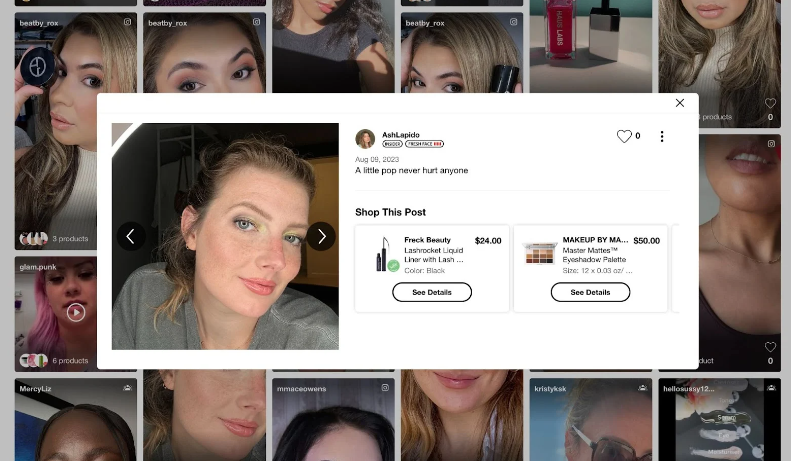
Sephora is a leading beauty retailer offering a wide range of cosmetics and skincare products.
How they use: Sephora’s Beauty Insider Community is where you can share beauty tips, inspiration, news, and recommendations with others. Users can join text threads and groups to connect. The Community Gallery showcases user-generated content from real customers in a visually appealing and interactive way.
11. LaCroix #LiveLaCroix
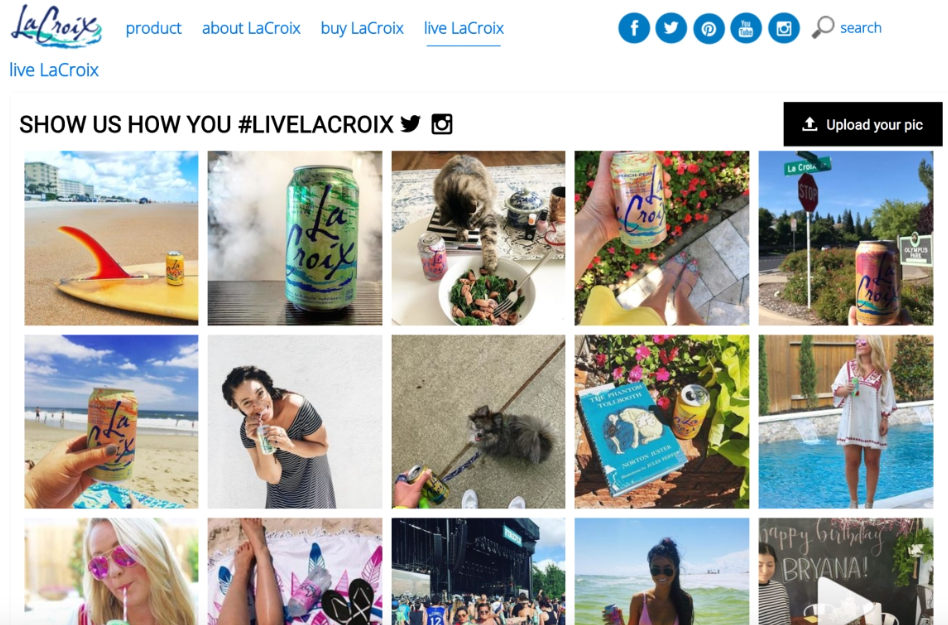
LaCroix is a popular sparkling water brand known for its refreshing flavors and colorful packaging.
About the ugc campaign: The #LiveLaCroix campaign invites fans to share how they enjoy their favorite LaCroix flavors. The UGC campaign highlighted the brand’s playful and refreshing vibe, creating a community of LaCroix enthusiasts who love to share their experiences.
12. Nike
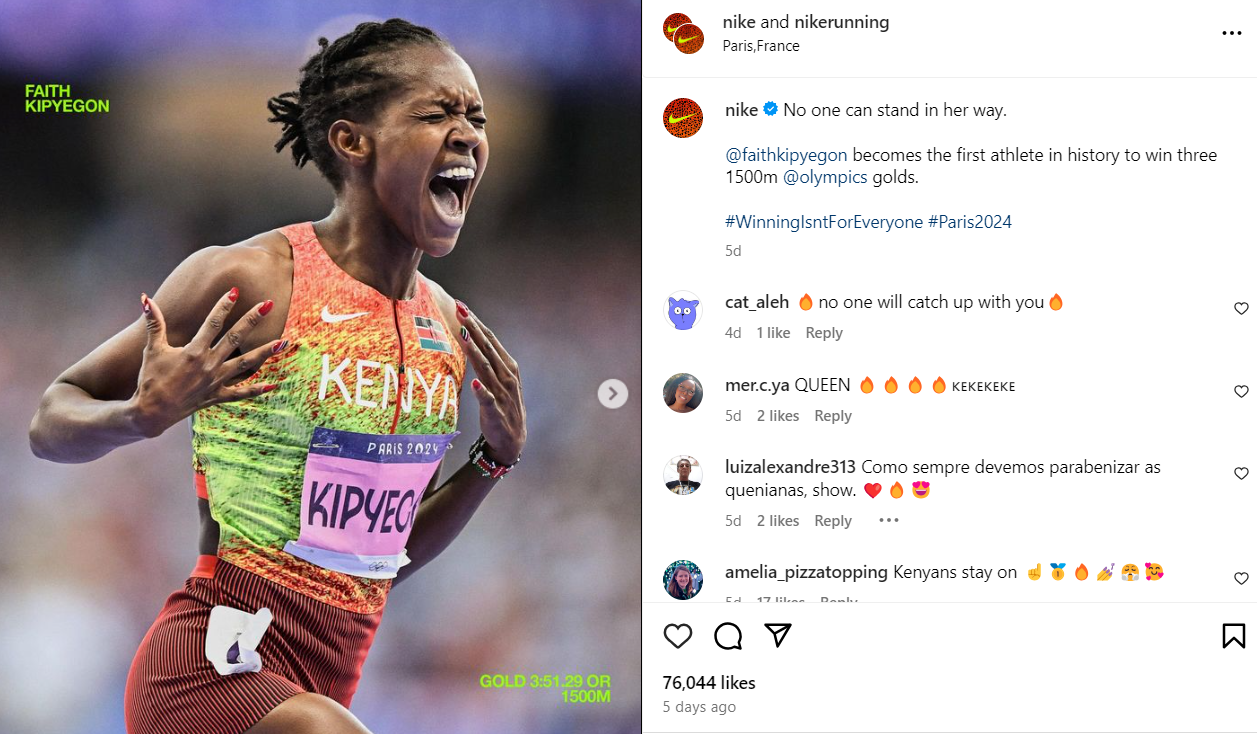
Nike is a global leader in sportswear, famous for its innovative athletic shoes and apparel.
How they use: Nike often features real athletes and fitness enthusiasts in its user generated content. By sharing their stories, Nike showcases the determination and passion of everyday user’s, making the brand feel inspiring and accessible.
13. eBay
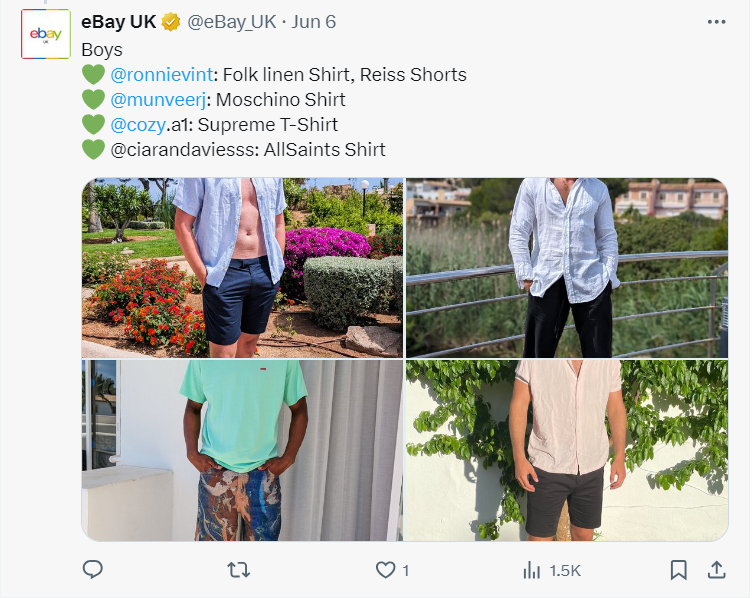
eBay is an online marketplace where people buy and sell various goods.
How they use it: eBay encourages users to share their best finds and sales on social channels. The user-generated content helps promote the diversity of items available on eBay, with real customers showing off the unique products they’ve discovered.
14. Macy’s
Macy’s is a department store known for its wide selection of clothing, home goods, and more.
How they use it: Macy’s features customer photos and stories in its marketing, showcasing how its products are part of special moments in customers’ lives. This helps Macy’s connect with customers personally and increase brand awareness.
15. Netflix
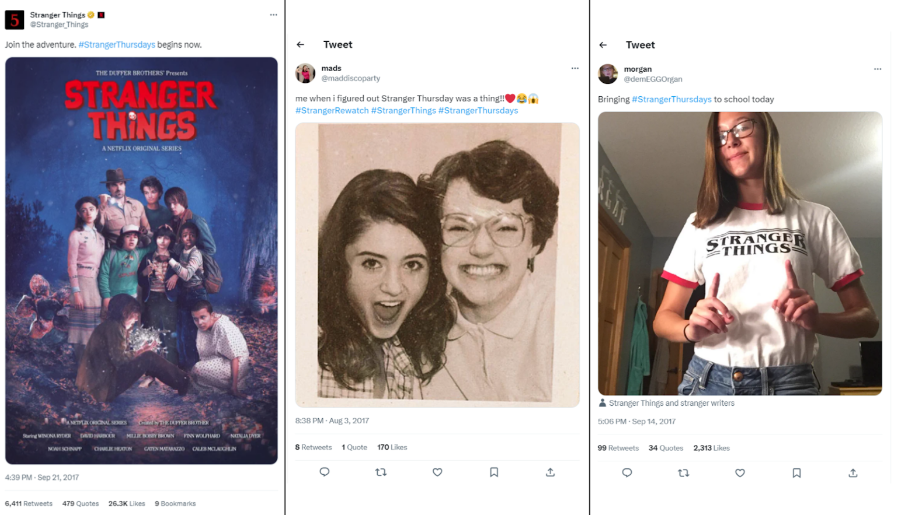
Netflix is a streaming service with a vast library of movies and TV shows.
About the campaign: When Stranger Things 2 was released, Netflix encouraged fans to share their reactions and fan art. The UGC campaign created social proof about the show, with fans spreading their excitement and creativity across social media.
16. T-Mobile
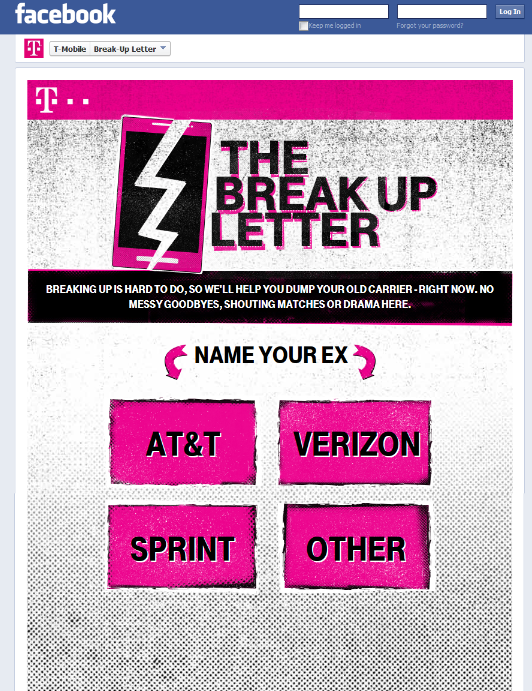
T-Mobile is a telecommunications company known for its mobile phone services.
About the ugc campaign: T-Mobile’s Breakup Letters campaign invited customers to write “breakup letters” to their old carriers. The clever user-generated content campaign allowed customers to share their frustrations and excitement about switching to T-Mobile, turning real experiences into powerful marketing.
17. Play Vox
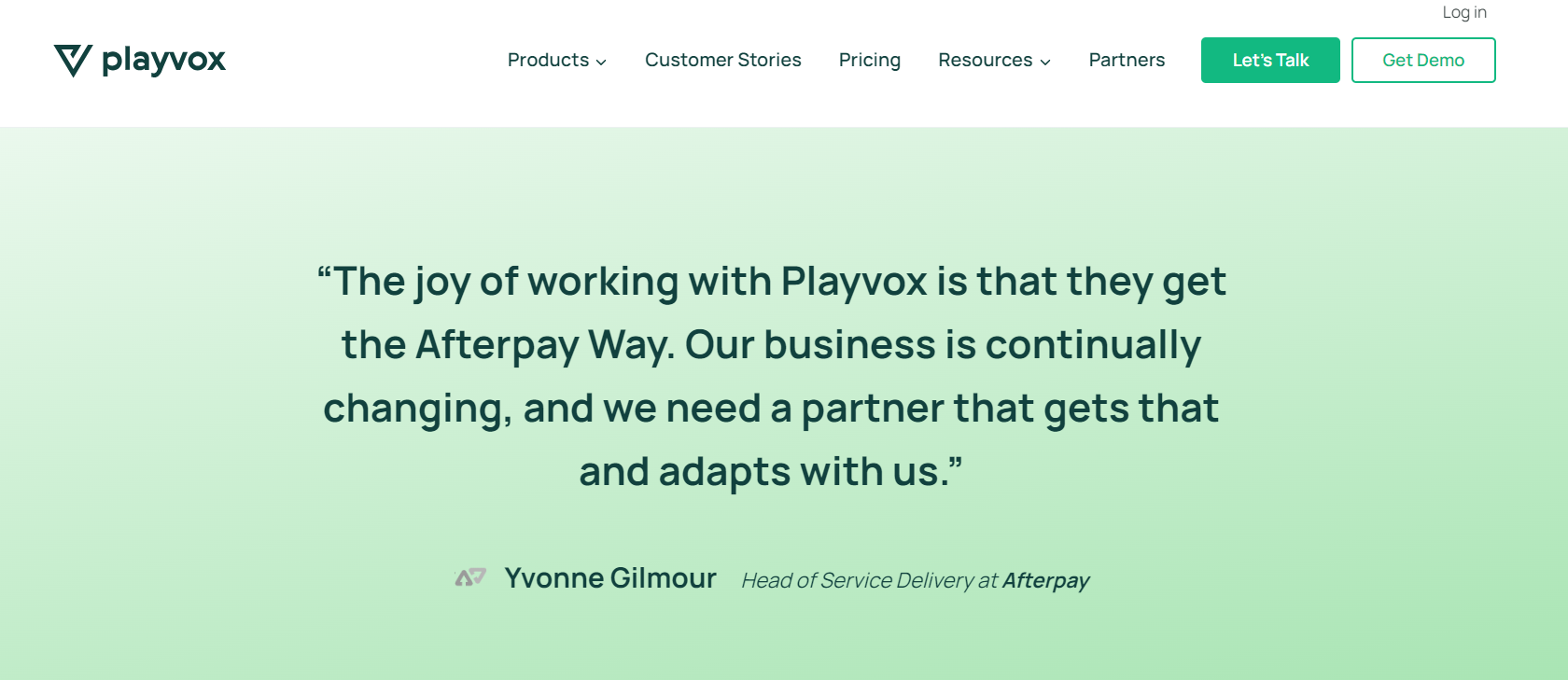
Playvox is a platform that helps businesses manage their customer service teams more effectively. It provides tools for quality assurance, coaching, and performance management, making it easier for companies to keep their customer service teams running smoothly.
How they use: Playvox leverages customer testimonials to build trust with potential clients. They showcase positive feedback from satisfied customers on their website and marketing materials. These testimonials highlight real experiences from companies using Playvox, helping others see the benefits of their solutions through the eyes of actual users.
18. Adobe
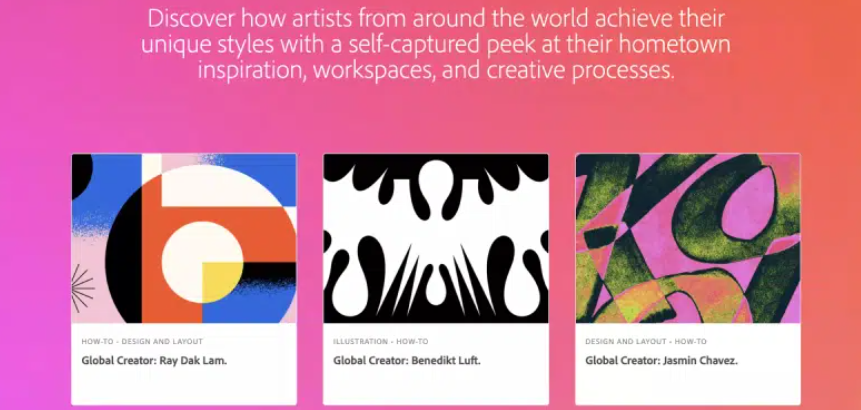
Adobe is a software company known for its creative tools like Photoshop and Illustrator.
About the campaign: The art maker series showcases the work of everyday artists who use adobe products. The user-generated content campaigns highlights the creativity of Adobe’s community, turning user content into a celebration of art and design.
19. Glossier 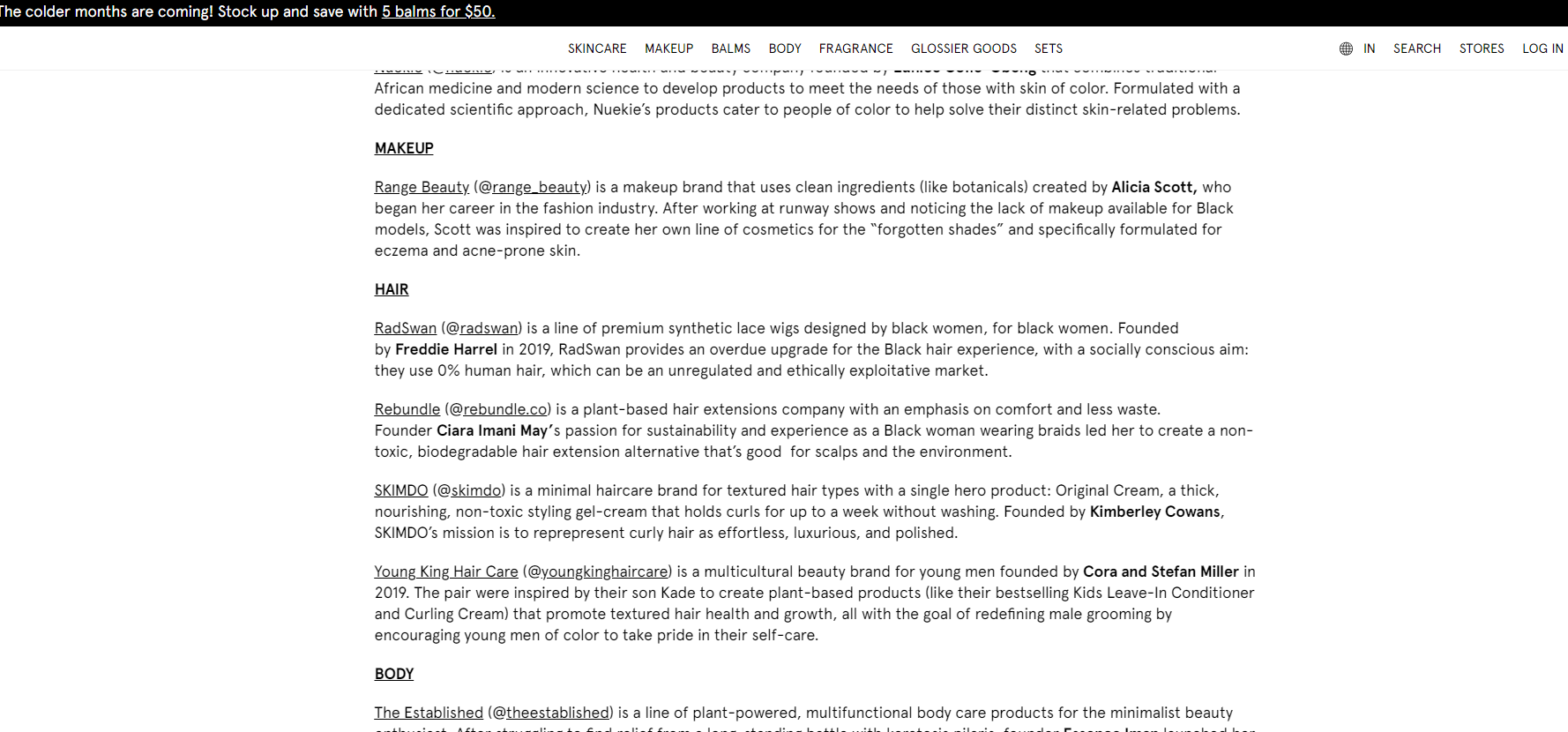
Glossier is a popular beauty and skincare brand. It offers simple and how to use products.
How they use: Glossier shares customer stories on its blog, showing real users and their beauty routines. These stories show how customers use Glossier products every day and build a sense of community and trust. By sharing these real experiences, Glossier supports its brand value and connects better with its audience, turning happy customers into brand supporters.
20. Chipotle #GuacMode
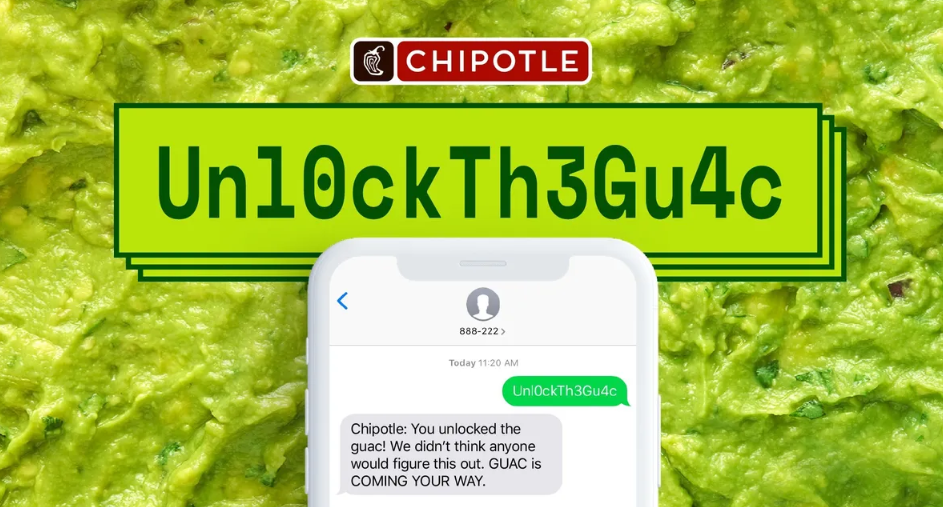
Chipotle is a fast-casual restaurant chain known for its fresh, customizable Mexican-inspired burritos and bowls.
About the campaign: The #GuacMode campaign rewarded Chipotle fans with free guacamole on their orders and encouraged them to share their excitement on social media. The campaign not only highlighted Chipotle’s popular guacamole but also created a sense of community among fans who love the brand’s fresh and flavorful offerings.
What Are the Best Tools to Manage User-Generated Content?
When managing user-generated content, including reviews, it’s essential to choose tools that provide valuable insights and help you showcase positive feedback effectively.
1. WiserNotify
WiserNotify Reviews App is designed to showcase and manage user-generated content effortlessly. It highlights reviews, provides valuable insights into customer sentiments, and helps manage feedback across your website.
2. Yotpo
Yotpo helps you gather and manage user-generated content, like online reviews. The platform provides useful insights and analytics, allowing you to use feedback to build customer trust and enhance your brand loyalty.
3. Sprout Social
Sprout Social offers tools to track and analyze user-generated content, including reviews and social media mentions. It helps you engage with your audience and measure the impact of positive feedback on your brand reputation.
4. Influee
Influee helps brands create and manage user-generated content campaigns by connecting them with creators. It simplifies the process of finding influencers, managing collaborations, and collecting authentic content. If you’re searching for a Collabstr alternative to streamline influencer marketing, Influee offers an easy-to-use platform for building strong creator partnerships.
Wrapping Up
The power of UGC is clear it transforms ordinary campaigns into extraordinary ones. Think of it as a collaborative effort where your audience becomes your biggest advocates. By encouraging users to post photos and share their experiences, you’re not just filling your feed with authentic content , you’re building trust and excitement around your brand.
The 20 inspiring UGC examples, we’ve explored show how effective this UGC strategy can be. When you create your own campaigns, focus on building real connections and celebrating your community for the best results.




